Landscape Gardening with Local Gardener: Transform Your Outdoor Space
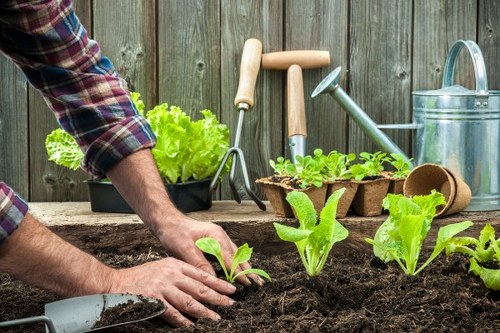
Introduction to Landscape Gardening
Landscape gardening is an art and science that combines aesthetic appeal with functional design, transforming outdoor spaces into beautiful and usable areas. Whether you are looking to create a tranquil garden retreat, a vibrant space for entertaining, or a sustainable habitat for local wildlife, local gardeners offer expertise that can bring your vision to life.
Choosing the right local gardener is crucial for ensuring that your landscape reflects your personal style while harmonizing with the surrounding environment. Local gardeners possess the knowledge of regional climates, soil types, and native plants, enabling them to design gardens that are both beautiful and resilient.
In this article, we'll delve into the various aspects of landscape gardening, including design principles, plant selection, sustainable practices, and maintenance tips to help you create and maintain a stunning garden that you can enjoy for years to come.
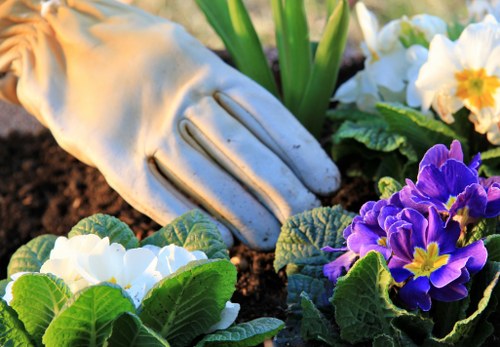
Design Principles for Effective Landscape Gardening
Understanding Space and Layout
Effective landscape gardening begins with a thorough understanding of your outdoor space. Assess the area’s size, shape, and existing features to create a cohesive layout. Consider how you want to use the space—whether for relaxation, entertainment, or gardening—and plan accordingly.
Use hardscape elements such as pathways, patios, and decks to define different areas within your garden. These structures not only provide functionality but also add visual interest and structure to your landscape design.
Incorporate softscape elements like plants, flowers, and shrubs to add color, texture, and life to your garden. Balancing hardscape and softscape elements is key to achieving a harmonious and aesthetically pleasing outdoor space.
- Assess the size and shape of your outdoor space.
- Define different areas based on intended use.
- Balance hardscape and softscape elements.
- Incorporate focal points to draw attention.
- Ensure accessibility and flow throughout the garden.
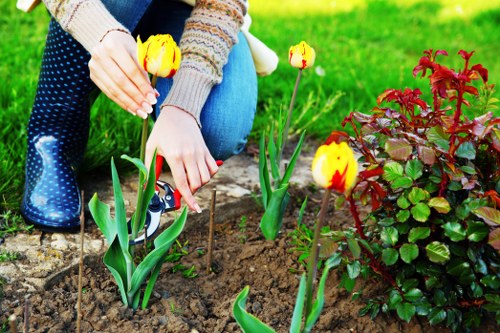
Plant Selection for Your Landscape
Choosing the Right Plants
Selecting the appropriate plants is fundamental to successful landscape gardening. Consider factors such as climate, soil type, sunlight exposure, and water availability when choosing plants for your garden.
Incorporate a mix of evergreen and deciduous plants to ensure year-round interest. Use native plants to enhance sustainability and support local wildlife, as they are well-adapted to your region's conditions and require less maintenance.
Additionally, consider the height, color, and blooming season of each plant to create a dynamic and visually appealing landscape. Group plants with similar care requirements together to simplify maintenance and promote healthy growth.
Top Plant Recommendations
- Succulents for drought-resistant areas.
- Flowering shrubs for vibrant colors.
- Ornamental grasses for texture and movement.
- Fruit-bearing trees for functional beauty.
- Herbs and vegetables for edible landscapes.
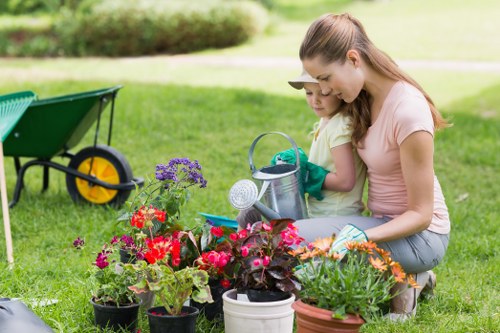
Sustainable Practices in Landscape Gardening
Eco-Friendly Gardening Techniques
Embracing sustainable practices in landscape gardening not only benefits the environment but also enhances the longevity and health of your garden. Implementing techniques such as rainwater harvesting, composting, and integrated pest management can lead to a more resilient and eco-friendly landscape.
Use mulch to retain moisture, suppress weeds, and regulate soil temperature. Opt for organic mulches like bark or straw, which enrich the soil as they decompose. Additionally, consider installing a rain barrel to collect and reuse rainwater for irrigation, reducing water consumption.
Choose permeable paving materials for walkways and patios to allow rainwater to seep into the ground, preventing runoff and erosion. Incorporating native plants and creating habitats for beneficial insects can also contribute to a sustainable garden ecosystem.
Benefits of Sustainable Gardening
- Reduces water usage and conserves resources.
- Enhances soil health and fertility.
- Promotes biodiversity and supports local wildlife.
- Decreases reliance on chemical fertilizers and pesticides.
- Creates a resilient and low-maintenance garden.
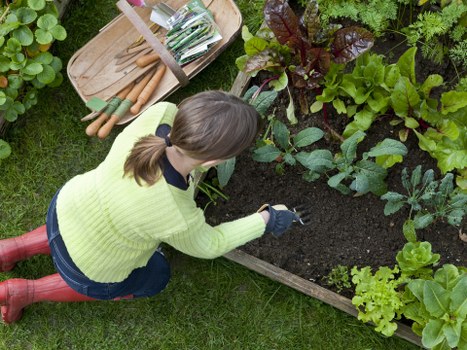
Maintenance Tips for a Thriving Garden
Regular Care and Upkeep
Consistent maintenance is essential for keeping your landscape garden healthy and attractive. This includes regular watering, pruning, weeding, and fertilizing to ensure that plants thrive and the garden remains well-organized.
Develop a maintenance schedule that aligns with the specific needs of your plants. Morning is the best time for watering, as it minimizes evaporation and allows plants to absorb moisture throughout the day. Prune dead or overgrown branches to promote healthy growth and improve the garden’s appearance.
Weed regularly to prevent unwanted plants from competing with your desirable species for nutrients and space. Additionally, apply organic fertilizers to replenish the soil and provide essential nutrients that support robust plant growth.
Effective Maintenance Strategies
- Establish a consistent watering routine.
- Prune and trim plants to maintain shape and health.
- Remove weeds promptly to reduce competition.
- Apply mulch to conserve moisture and suppress weeds.
- Monitor for pests and diseases and take appropriate action.
Enhancing Your Garden with Features
Adding Functional and Decorative Elements
Integrating features such as water elements, lighting, and outdoor furniture can enhance both the functionality and beauty of your landscape garden. These additions create inviting spaces for relaxation and entertainment while adding visual interest.
Consider installing a garden pond or fountain to introduce the soothing sounds of water and attract wildlife like birds and butterflies. Outdoor lighting not only highlights key areas of your garden but also extends its usability into the evening hours, creating a magical ambiance.
Outdoor furniture such as benches, loungers, and dining sets provide comfortable spaces for enjoying your garden. Choose pieces that complement your garden's style and materials that can withstand the elements, ensuring longevity and minimal maintenance.
Popular Garden Features
- Waterfalls and fountains for sound and movement.
- Solar-powered lighting for energy efficiency.
- Garden sculptures and art for visual appeal.
- Pergolas and gazebos for shaded areas.
- Fire pits and heaters for warmth and ambiance.
Conclusion and Next Steps
Bringing It All Together
Landscape gardening is a rewarding endeavor that enhances the beauty and functionality of your outdoor space. By collaborating with a local gardener, you can ensure that your garden is thoughtfully designed and expertly maintained, tailored to your specific needs and the unique characteristics of your environment.
Implementing sound design principles, selecting the right plants, adopting sustainable practices, and maintaining your garden diligently will result in a lush, vibrant, and enduring landscape. Whether you are a seasoned gardener or a beginner, these insights will help you cultivate a garden that provides joy and tranquility for years to come.
Ready to transform your outdoor space? Contact us today to schedule a consultation with our expert local gardeners and begin your journey to a beautiful landscape garden.